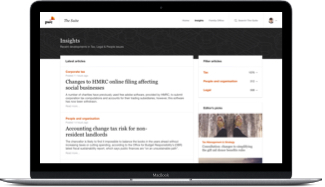Last night (10 November) additional guidance on the extension of the Coronavirus Job Retention Scheme (CJRS) was released and hopefully this will mean we now have some certainty and no further significant amendments.
Yesterday’s announcement covered employer and employee eligibility under the extended CJRS, how to make a claim and confirmation of HMRC’s plans to publish details of employers who use the scheme. We have summarised below the key points you need to be aware of from the 10 new documents:
- Employer and employee eligibility
- Employers can claim for employees who were employed on 30 October 2020. The employer must have made an RTI submission between the 20 March 2020 and 30 October 2020 notifying a payment of earnings for that employee.
- There are no minimum furlough periods and employees can be furloughed for any amount of time and work pattern.
- There is no maximum number of employees that can be claimed for from 1 November 2020 (no “high water mark” as under CJRS2).
- Employers can furlough employees who are clinically extremely vulnerable, at the highest risk of severe illness from coronavirus or unable to work because of caring responsibilities arising from COVID-19, including looking after children.
- The Government is reviewing whether employers should be eligible to claim for employees serving contractual or statutory notice periods and may change the approach for claim periods starting on or after 1 December 2020, with further guidance published in late November.
- Making a claim
- Claims can be made from 11 November, must be for a minimum period of 7 calendar days and must start and end in the same calendar month.
- Importantly, claims need to be submitted within 14 calendar days of the month following the claim period. This will be extended to the next weekday where the 14th lands on a weekend, which happens for the first time in February.
- For claims for periods after 1 November, the claim amount can only be increased if amended within 28 calendar days after the month the claim relates to, again unless this falls on a weekend, then it is the next working day.
- HMRC may accept a claim made after the relevant deadline if there was a “reasonable excuse” for failing to make it in time and then it was claimed without delay after the excuse no longer applied. HMRC will not consider reasonable excuses in advance of a claim deadline.
- While it’s welcome news that employers will be able to use the same definitions of Usual Hours and Usual Wages as under CJRS1 and 2, there are new calculations for employees that were not eligible previously.
- Written agreement
- Employers must have confirmed in writing that an employee has been furloughed or flexibly furloughed. Importantly retrospective agreements applying from 1 November must be in place by 13 November, after which agreements must be in place before the furlough period if they are going to be relied upon for the purpose of the claim.
- Publication
- For the month of December onwards, HMRC will publish the names of companies and LLP’s, where claims have been made. So, businesses should consider the appropriateness of making a claim and the reputational and stakeholder impact of doing so.
While there is a lot of detail we recommend that all employers take the following actions:
- Take advice and take the time now to review all claims for periods ending 31 October 2020 and ensure that adjustments, especially where they result in an underclaim, are submitted to HMRC by 30 November 2020.
- Ensure that furlough agreements, especially where they need to have retrospective effect to 1 November 2020, have been put in place with employees by 13 November.
- Familiarise yourself with the updated guidance and plan for making claims under the CJRS extension - the windows for these claims are very tight therefore it is important to prepare now and revisit governance and processes.
We will be covering these details and more in our virtual Employment event taking place tomorrow at 2pm. If you want to join us you can still register today.

